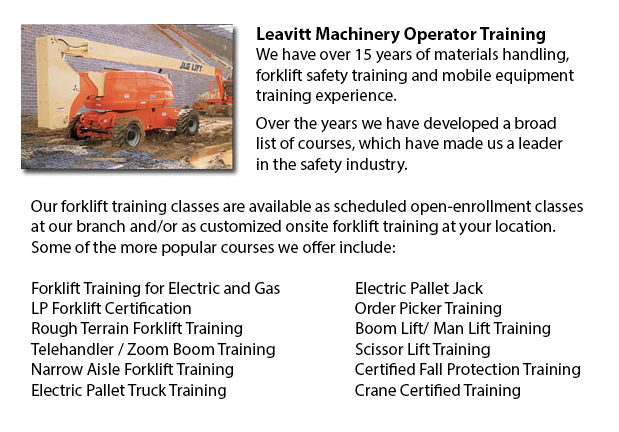
Ontario Aerial Platform Training - Aerial forklifts might be utilized to accomplish several unique duties executed in hard to reach aerial spaces. Many of the duties associated with this type of lift include performing daily upkeep on structures with high ceilings, repairing telephone and utility cables, raising heavy shelving units, and trimming tree branches. A ladder might also be utilized for some of the aforementioned tasks, although aerial lifts offer more security and strength when properly used.
There are a variety of distinctive versions of aerial hoists accessible, each being capable of performing slightly unique tasks. Painters will sometimes use a scissor lift platform, which is able to be used to get in touch with the 2nd story of buildings. The scissor aerial hoists use criss-cross braces to stretch out and lengthen upwards. There is a platform attached to the top of the braces that rises simultaneously as the criss-cross braces raise.
Cherry pickers and bucket trucks are another kind of the aerial hoist. Typically, they possess a bucket at the end of an extended arm and as the arm unfolds, the attached bucket platform rises. Forklifts utilize a pronged arm that rises upwards as the lever is moved. Boom hoists have a hydraulic arm which extends outward and elevates the platform. Every one of these aerial lifts call for special training to operate.
Training programs presented through Occupational Safety & Health Association, known also as OSHA, cover safety methods, system operation, maintenance and inspection and device load capacities. Successful completion of these education programs earns a special certified license. Only properly qualified people who have OSHA operating licenses should operate aerial platform lifts. The Occupational Safety & Health Organization has established rules to uphold safety and prevent injury when using aerial lifts. Common sense rules such as not utilizing this machine to give rides and ensuring all tires on aerial lifts are braced so as to hinder machine tipping are referred to within the rules.
Sadly, statistics expose that greater than 20 aerial lift operators pass away each year while operating and almost ten percent of those are commercial painters. The bulk of these mishaps were triggered by improper tie bracing, therefore a few of these may well have been prevented. Operators should ensure that all wheels are locked and braces as a critical safety precaution to prevent the machine from toppling over.
Marking the neighbouring area with obvious markers have to be utilized to safeguard would-be passers-by in order that they do not come near the lift. Also, markings must be set at about 10 feet of clearance amid any electrical cables and the aerial hoist. Hoist operators should at all times be properly harnessed to the lift while up in the air.
-
Ontario Manlift Certification
Ontario Manlift Certification - The Elevated Platforms and Manlifts Certification course helps to provide the required training on the work practices, safe operating procedures, regulations and rules regarding the everyday activities for the operator... More -
Ontario Crane Training
Ontario Crane Training - Bridge cranes or overhead cranes are actually a type of industrial material handling crane making use of a line and hook mechanism that runs on a horizontal beam running along two widely separated rails. Various overhead cran... More -
Ontario Aerial Lift Train the Trainer
Ontario Aerial Lift Train the Trainer - The Aerial Lifts Train the Trainer Certification Program teaches trainers how to effectively train operators in safe industrial mobile machinery operation. Trainers are given in-depth instruction about aerial l... More -
Ontario Warehouse Forklift Training Classes
Ontario Warehouse Forklift Training Classes - The reason for warehouse training classes are to raise the awareness of common workplace dangers. The trainees will learn essential warehouse safety procedures. An emphasis is placed on paying attention t... More -
Ontario Forklift Training School
Ontario Forklift Training School - Forklift Training School - Industry and federal regulators have established the criteria for forklift safety training based on their current standards and regulations. Those wanting to operate a forklift must finish... More -
Skid Steer Loader Training in Ontario
The engine powered skid-steer loader consists of a rigid and small frame, equipped along with lift arms that could attach to lots of industrial tools and attachments to execute many labor saving jobs. Normally, skid-steer loaders are four-wheel drive... More -
Ontario Crane License
Ontario Crane License - Crane operators ought to be "credentialed", that means they ought to own a crane operator certification or license. Credentialing is considered a mandatory governmental requirement to be able to practice as an operator of a cr... More -
Ontario Forklift Operator Training
Ontario Forklift Operator Training - Forklift training is a prerequisite in North America and is intended to prevent workplace injuries and death. Forklift training offers driver training intended for forklift operators. Training programs teach the s... More

Forklift Certification Ontario
TOLL FREE: 1-888-254-6157
Toronto, Ontario
forkliftcertificationontario.com
Email Us
About Us


